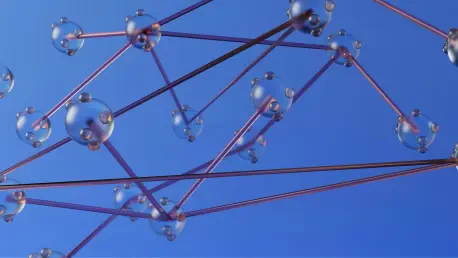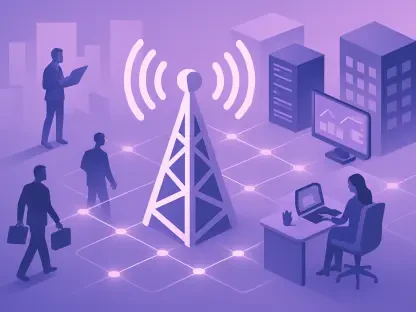In this insightful conversation today, we’re speaking with Chloe Maraina, a distinguished expert in business intelligence and data science. Known for her ability to weave compelling narratives through the power of big data, Chloe brings a unique vision for the future of data management systems. Today, we delve into the intriguing advancements in AI-based network management, particularly focusing on Juniper Networks’ recent upgrades to the Mist AI platform.
What is the main objective of Juniper Networks’ recent upgrades to the Mist AI platform?
The main aim of Juniper Networks’ updates is to enhance the management and observability of networks through AI-driven capabilities. With these upgrades, Juniper is stepping up its game by enabling more efficient and streamlined approaches to identifying and resolving network challenges. The goal is to not only address problems more quickly but also to introduce a new level of proactivity in network management.
Can you explain how Marvis Minis function within Juniper’s Mist AI networking platform?
Marvis Minis operate as a vital component of the Mist AI platform, specifically through the Marvis virtual network assistant. They essentially create a ‘digital twin’ of a customer’s network to simulate and assess user connections continuously. This simulation allows them to validate network configurations and detect a range of potential issues without needing extra hardware. It’s about simulating traffic to pinpoint problems before they become user-impacting.
How do Marvis Minis simulate user connections and detect network issues?
By simulating end user, device, and application traffic, Marvis Minis can observe how these elements interact within the network. This allows them to proactively validate both wired and wireless network experiences. They not only identify issues as they arise but also simulate potential future problems so they can intervene before users even notice there’s an issue.
What is meant by ‘digital twin’ in the context of Marvis Minis?
In this context, a ‘digital twin’ refers to creating a virtual model of a network environment. Marvis Minis use this virtual representation to conduct various tests and simulations, replicating the actual network environment to predict how network changes can affect performance and detect potential failures.
How do Marvis Minis contribute to AIOps responses?
The insights gathered by Marvis Minis are fed back into the Mist AI engine. This continuous stream of data supports AIOps, or AI Operations, by providing a feedback loop that enhances the AI’s ability to foresee, diagnose, and address network issues, allowing for more automated and informed decision-making.
How do Marvis Minis improve WAN and cloud monitoring capabilities?
With the newfound ability to extend digital twinning across WANs and cloud environments, Marvis Minis enhance the monitoring capabilities for wide-area networks and cloud-based applications. This broadens the oversight beyond local setups and into larger, more complex environments, making them indispensable for holistic network management.
What are the benefits of the new dashboard mentioned in the Mist AI platform upgrades?
The new dashboard offers a consolidated view of the network’s application performance, providing customers with quicker insights into any issues that may arise. This centralized visualization allows for a more efficient management process, enabling quicker identification and rectification of network problems.
Can you describe the enhancements made to the client offering for network automation?
These enhancements improve the automation capabilities, which means the platform can adjust network configurations and resolve issues independently. This reduces manual intervention and allows for a smoother network management experience, freeing up valuable human resources for more strategic tasks.
How do the new digital twinning features extend across global WANs and support cloud environments?
The updated features enable digital twinning not just locally but across global WANs and into cloud environments. This enhancement widens the platform’s applicability, allowing users to manage extensive and distributed networks more effectively by maintaining a virtual representation of these complex setups.
In what ways do Marvis Minis differ from traditional solutions for digital twinning and synthetic testing?
Unlike traditional solutions, Marvis Minis don’t require any manual configuration or additional hardware or software installations. They inherently capture and analyze data on a consistent basis, providing instant feedback in response to network events, which allows for real-time issue resolution without adding to the infrastructure burden.
Can you elaborate on the functions of the new Marvis Actions dashboard?
The Marvis Actions dashboard provides visibility into automated network management decisions made by the AI assistant. Users can see the rationale behind each action, track the history of resolutions, and understand how the system identifies and addresses issues, giving a transparent view of the automation at work.
How does the Marvis client software for Wi-Fi-connected devices enhance network visibility?
By focusing on the device’s perspective, the Marvis client software offers unique insights into how users interact with the Wi-Fi environment. It provides a detailed view of device characteristics and performance, helping fill visibility gaps and offering a comprehensive analysis of network health from the user’s viewpoint.
What kinds of insights does the Marvis Client provide, and how does it fill a visibility gap?
The Marvis Client gives insight into how each device experiences the Wi-Fi network, detailing the device’s type, OS, and connectivity status. This user-centric data fills a significant gap by providing a perspective that was previously hard to capture, enabling IT teams to tailor solutions to real-world network usage.
How do Juniper’s access points, routers, switches, and firewalls complement the data from Marvis Client?
These devices integrate with the Marvis Client to provide a complete data ecosystem. They enrich the insights by ensuring that the information collected from individual devices is aligned with the broader network infrastructure, enabling a more comprehensive troubleshooting and performance improvement strategy.
How is the collected data used to proactively address performance issues and improve troubleshooting?
The data collected helps anticipate performance hiccups before they affect users. By leveraging real-time insights and the AI’s analytical prowess, the system can pinpoint potential issues and suggest or implement fixes proactively, thus reducing downtime and improving network reliability.
Can you discuss the importance of not requiring additional hardware or manual configuration for Marvis Minis?
This lack of requirement simplifies the deployment and scalability of the Mist AI platform. It ensures that customers can benefit from its capabilities without having to invest in extra devices or services, making it a cost-effective and efficient solution for a wide range of network scenarios.
Do you have any advice for our readers?
Absolutely. As we move into an era where AI-driven solutions become ubiquitous, it’s crucial to embrace these technologies not only for their efficiency but also for their ability to transform user experiences. Always stay informed, be proactive in your adoption of such tools, and leverage them to not just solve problems but to innovate continuously.









